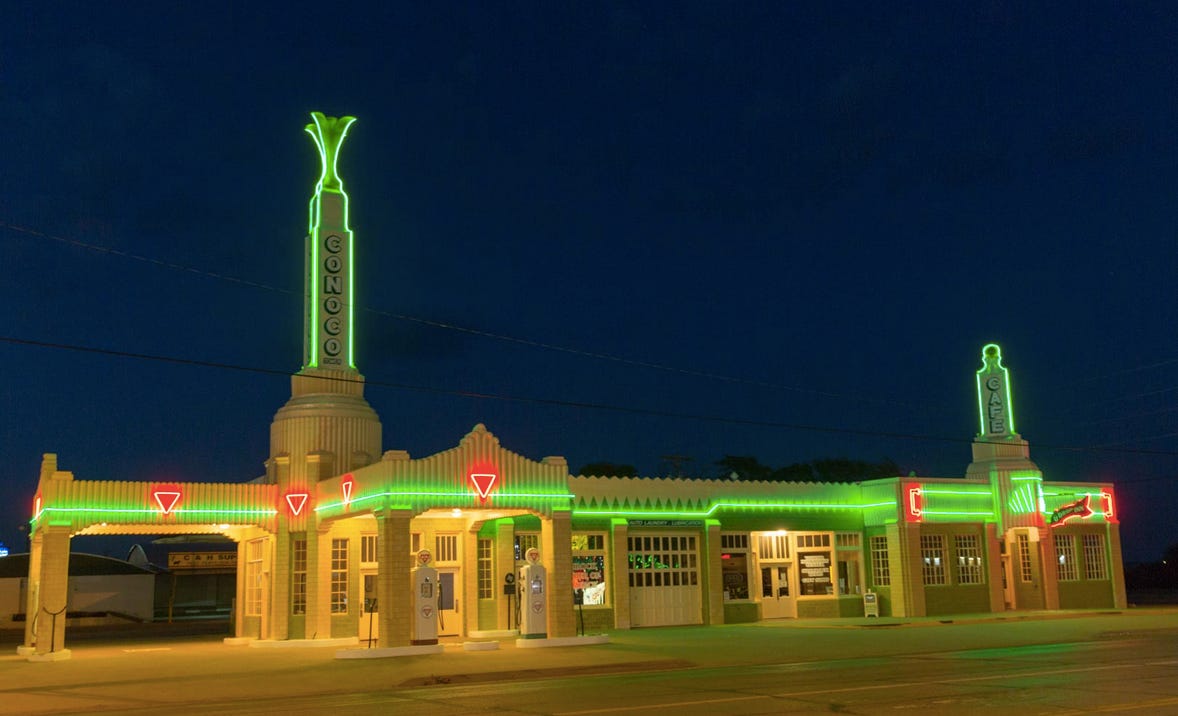Shamrock Memories: Tales from a Texas Town
In the late 1980s, during my last 3 years of high school, I found myself in Shamrock, Texas, a quaint town nestled in the southern part of Wheeler County, deep in the Texas Panhandle. At first glance, Shamrock might seem ordinary, but its history, touched by a dash of Irish charm, reveals a story uniquely its own.
Shamrock’s origins trace back to 1890 when George Nickel and his wife Dora offered their humble dugout to serve as the town’s first post office. Once a week, mail would arrive by horseback from nearby Mobeetie. The townspeople trusted George with naming their new outpost, and inspired by his Irish-American mother’s wisdom—that shamrocks brought good luck—George chose the name Shamrock.
Living in Shamrock, I felt oddly connected to the town’s Irish roots. Locals proudly maintained a tangible connection to Ireland itself—a piece of the famous Blarney Stone, brought to Texas in 1959. This wasn't an easy feat; resistance from Ireland meant the stone required an escort of armed guards and an armored truck for its journey to our small town. Today, residents still celebrate this heritage passionately, gathering annually for vibrant events such as the lively St. Patrick’s Celebration each March and the charming Irish Craftfest held every October. It was a local custom every St. Patrick’s to kiss the Blarney Stone.
Among Shamrock’s unique treasures was the iconic U-Drop Inn, a striking piece of architecture built in 1936 at the junction of historic Route 66 and U.S. Route 83. When it opened, it was the only café for 100 miles, bustling with travelers eager for rest and refreshment. It reopened as a restraunt briefly and I used to eat there at times during my high school years. In 1997, the Texas Historical Commission recognized the U-Drop Inn as one of Route 66’s architectural gems and its charming design even inspired Ramone's Body Shop in Pixar’s 2006 animated film Cars, ensuring Shamrock’s legacy continues to delight audiences worldwide.
Reflecting on those days, I realize Shamrock wasn’t merely where I spent my last high school days—it was a place alive with stories, spirit, and an unmistakable hint of Irish luck. Last year, I traveled to Ireland to a small town called “Gorey” to write music with some very talented friends from Nashville. I wrote a song about the town called “Gorey” at French’s Irish Pub with songwriters Mark Hootman and Sheila Easson. Listen to it here.
By the way, my friend Grammy award winning artist Phil Madeira, (the veteran songwriter for artists such as Alison Krauss, Garth Brooks, Keb’ Mo’ and Emmylou Harris sideman) wrote a new song about me called “Maverick”.
Listen to the new song called “Maverick” here
St. Patrick: The Man Behind the Shamrock
St. Patrick, famously celebrated each year on March 17th, was a 5th-century Romano-British missionary and bishop known as the "Apostle of Ireland." Although widely recognized as Ireland’s patron saint, much of his life remains shrouded in mystery. Traditional accounts highlight his significant role in introducing Christianity to Ireland, famously using the shamrock to illustrate the concept of the Holy Trinity. His legacy endures today through vibrant celebrations featuring parades, green attire, and festive gatherings.
Born around the late 4th century in Roman Britain, Patrick's original name was Maewyn Succat. It was not until he became a priest that he adopted the name Patricius, or Patrick. At age sixteen, Patrick's life dramatically changed when he was captured by Irish pirates and sold into slavery in Ireland. During six difficult years spent herding sheep in isolation, Patrick deepened his Christian faith, finding comfort and strength through prayer and contemplation.
Convinced of divine intervention, Patrick eventually escaped captivity and returned to Britain. There, he studied under St. Germaine of Auxerre for fifteen years, ultimately becoming ordained as a priest and then a bishop under Pope Celestine I. Driven by a powerful calling, Patrick returned to Ireland, determined to share Christianity with its people.
His mission was far from easy; Patrick encountered fierce resistance from the druidic high priests, facing imprisonment and persistent opposition. Yet, his unwavering dedication enabled him to establish monasteries, churches, and educational institutions throughout Ireland, profoundly impacting the nation's spiritual landscape.
One of Patrick’s enduring legacies was his use of the shamrock, a plant native to Ireland, to explain the Holy Trinity—Father, Son, and Holy Spirit. This innovative teaching method contributed significantly to his lasting symbolic association with the shamrock.
After roughly thirty years of tireless evangelism and institution-building, Patrick passed away on March 17th, around 461 A.D. Though initially forgotten, his legacy gradually resurfaced through mythology and folklore. While he was informally canonized by the Catholic Church, no formal canonization took place, as such processes did not yet exist at the time.
Today, St. Patrick’s Day commemorates the extraordinary life and contributions of this historical figure. Beyond the festive celebrations, understanding Patrick’s story reveals a remarkable journey marked by faith, resilience, and transformation.











